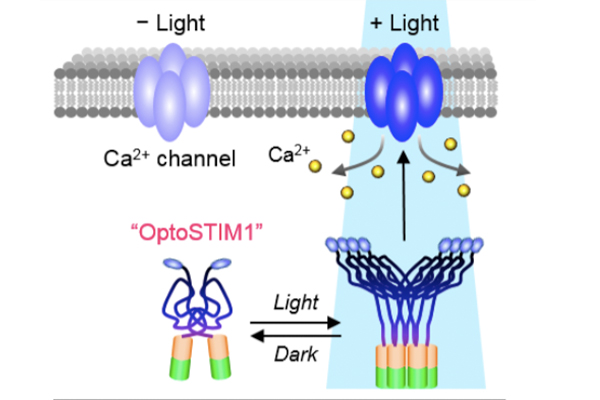The largest and the most complex molecule in any cell is the chromosomal DNA, the depository of genetic information. This enormously long polymer has to be highly condensed, otherwise these molecules will leave no space in cells for other molecules to work. More importantly, the two copies of replicated chromosomes cannot be separated and partitioned into two daughter cells during the cell division process due to the tangly nature of long polymers. How such a long, complicated, and compacted molecule can be maneuvered so easily by cells has amazed and intrigued scientists for a long time. Undoubtedly, chromosomal DNA is one of the most fundamental research subjects and represents a “black box” containing many challenging questions to be answered.
A multi-protein complex called condensin is the principle mediator of chromosome condensation. Three major types of condensins are found in nature, two prokaryotic condensins and one eukaryotic condensin. They are composed of at least four different subunits and have a summed molecular weight of over 300kDa, posing a big challenge in the production of functional complexes. They commonly contain two SMC (structural maintenance of chromosomes) molecules that form a homo- or hetero-dimer. The SMC protein has an ATPase domain and a hinge domain that are separated by a very long coiled coil (~50 nm). The hinge domain serves as the dimerization interface, and a given SMC dimer forms a closed structure together with the non-SMC subunits. It has been long postulated that the long coiled coils form a ring-like structure within which chromatin fibers can be entrapped, possibly in an ATP hydrolysis-dependent manner.
Contrary to long-held views, we showed that the coiled coils in both prokaryotic and eukaryotic condensins form a rod-like structure by using a number of biophysical methods which include X-ray crystallography and electron microscopy. Furthermore, we showed that the juxtaposed coiled coils adopt a more open conformation at the hinge domain upon ATP and DNA binding to the condensin molecule, which implies that coiled coils serve as a communication cable between the ATPase domain at one end and the hinge domain at the other end of the molecule. We are currently investigating further how this communication is able to affect the condensation of chromosomal DNA.
This work was supported by the National Research Foundation of Korea (NRF) grant funded by the Korean government (No. 2013-034955), and carried out as an integrative research with scientist at Max Planck Institute of Biochemistry. This work was published in Molecular Cell in January 2015.







